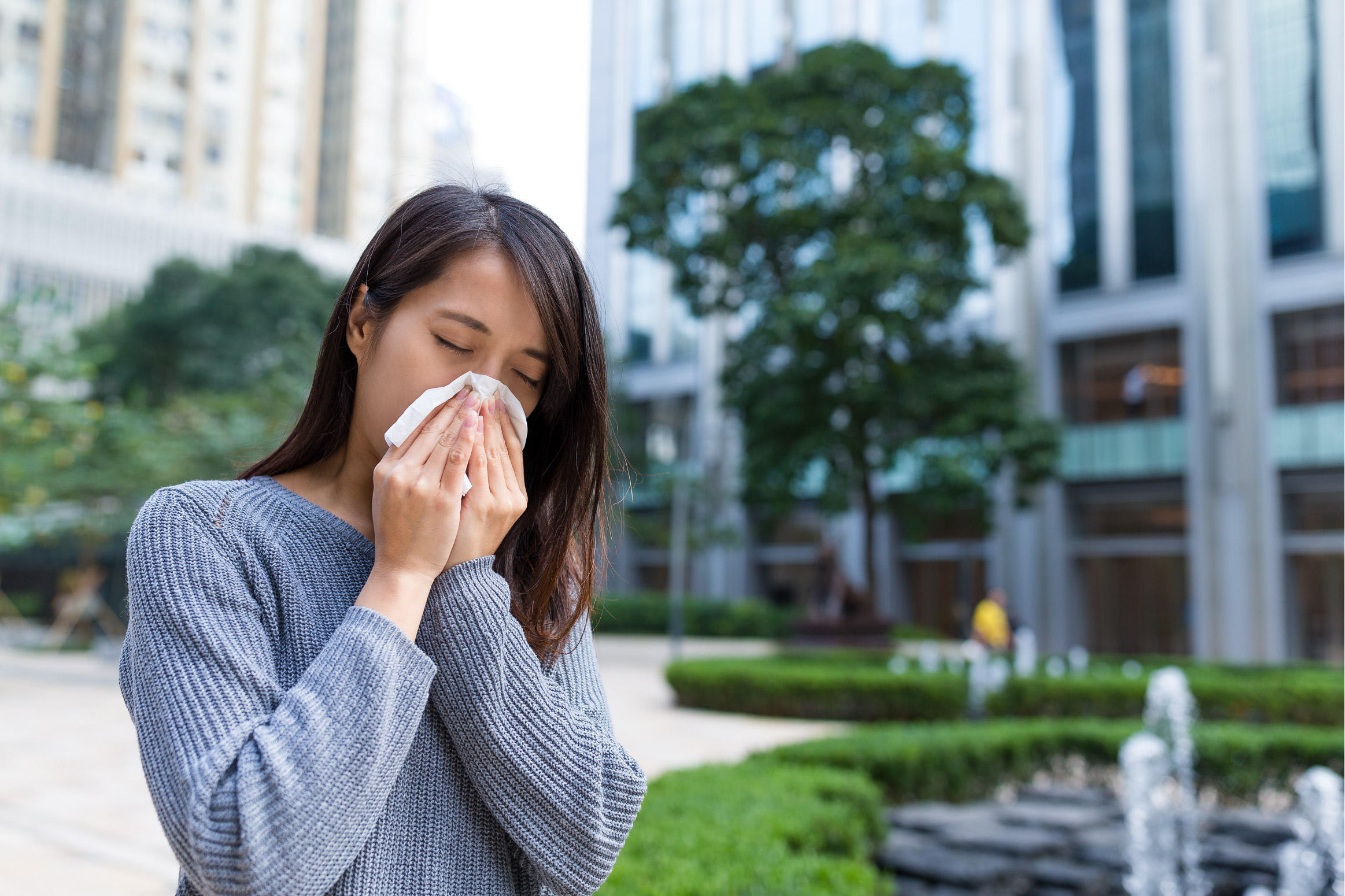When it comes to the common cold – and the sneezes, sniffles and other yucky symptoms that come with it – you typically think of winter, right? Think again. Spring is one of the peak times for colds.
Turns out that the viruses that cause colds like warmer weather, too, and replicate more easily when temps are mild. While you’re more likely to get a cold during winter months when people (and their bugs) tend to gather indoors and cold air tamps down the body’s immune response, don’t be surprised when you notice a familiar throat tickle and other respiratory gunk this spring.
How long do colds last?
The common cold typically lasts 7 to 10 days. Here’s a breakdown of what you can expect when you catch one.
- Days 1- 3: Here it comes. A sore or scratchy throat may be your first hint of things to come during this early stage. Other signs include:
- Sneezing
- Runny or stuffy nose.
- Cough.
- Hoarseness.
- Days 4-7: It just got worse. Along with your initial cold symptoms, you may also experience:
- Body aches.
- Headache.
- Runny eyes and nose.
- Fatigue.
- This symptom is more common in children.
- Days 8-10: Finally…relief. By this point, you should be feeling better. Some symptoms, however, may hang around for a while. Coughs can linger for up to two months after the initial infection.
How can I tell the difference between cold and allergy symptoms?
Spring allergies and colds share a lot of the same symptoms. This time of year, it’s not easy to tell the difference.
Here are a few clues that might help:
- Colds don’t usually last more than 14 days. Allergies usually follow a pattern and hang around longer.
- Colds take a few days to appear after exposure to a virus. Allergy symptoms can start immediately after contact with an allergy trigger.
- Colds seldom cause itchy eyes, ears, nose and throat, which are typical allergy symptoms.
- Allergies don’t cause fevers. They can, however, lead to health issues that do cause fevers, such as a sinus infection.
- Allergies don’t come with “wet” coughs that bring up fluid, such as mucus.
- Allergies rarely cause sore throats or body aches.
What’s the best way to treat colds?
There’s no cure for the common cold – and there’s not much you can do to shorten its duration – but there are ways to relieve uncomfortable symptoms while yours runs its course.
Here are a few ways to feel better:
- Stay hydrated. Water, juice, warm broth or lemon water with honey will help loosen congestion and prevent dehydration. Avoid alcohol or any caffeinated beverages.
- Rest as much as possible. Your body needs time to heal.
- Use a cool-mist humidifier to moisten air and soothe air passages and relieve congestion. Steam from a hot shower will also work.
- Try cold and cough remedies. For adults and children 5 years and older, over-the-counter decongestants, antihistamines, pain/fever relievers and cough medication may ease some symptoms.
- Soothe your sore throat. Try a saltwater gargle or popsicles if your throat feels itchy or painful. Ice chips and lozenges can also bring relief, although they pose a choking hazard for young children.
- Stay home if you’re sick. You’ll get better faster, and you’ll keep others around you from getting sick.
Indy tip: Always talk with a health care clinician before giving your child nonprescription cold medications. Some contain ingredients that are not recommended for children.
What are rhinoviruses and how are they related to the common cold?
Rhinoviruses are the most common infectious agent of humans, and there are more than 100 strains out there doing their thing.
We could geek out here and medsplain that rhinoviruses belong to the Enterovirus genus in the Picornaviridae family and are separated into three genetically distinct species, but all you really need to know is that they are the most frequent cause of colds.
And just to make things even more interesting, adenoviruses are a whole other family of viruses that can also cause cold symptoms.
Should I see a clinician for my cold symptoms?
If your symptoms last more than 10 days or are getting worse, it’s a good idea to connect with an Indigo Urgent Care clinician just to make sure something else isn’t going on. For in-person care, you can walk into one of our convenient locations or book an appointment online. And if you’re feeling too crumby to come in, simply schedule a face-to-face online care appointment from your favorite device and be seen from the comfort of home. Either way, one of our clinicians will assess your symptoms, offer treatment recommendations and provide a prescription, if needed.
In-person or online, we’re here from 8 am to 8 pm, every day.
If you or a loved one have any of the following symptoms, visit your nearest emergency department:
- Trouble breathing.
- Chest pains.
- Fever that is high or doesn’t improve.
- Pain when swallowing.
- Coughing, congestion or headaches that won’t stop.


